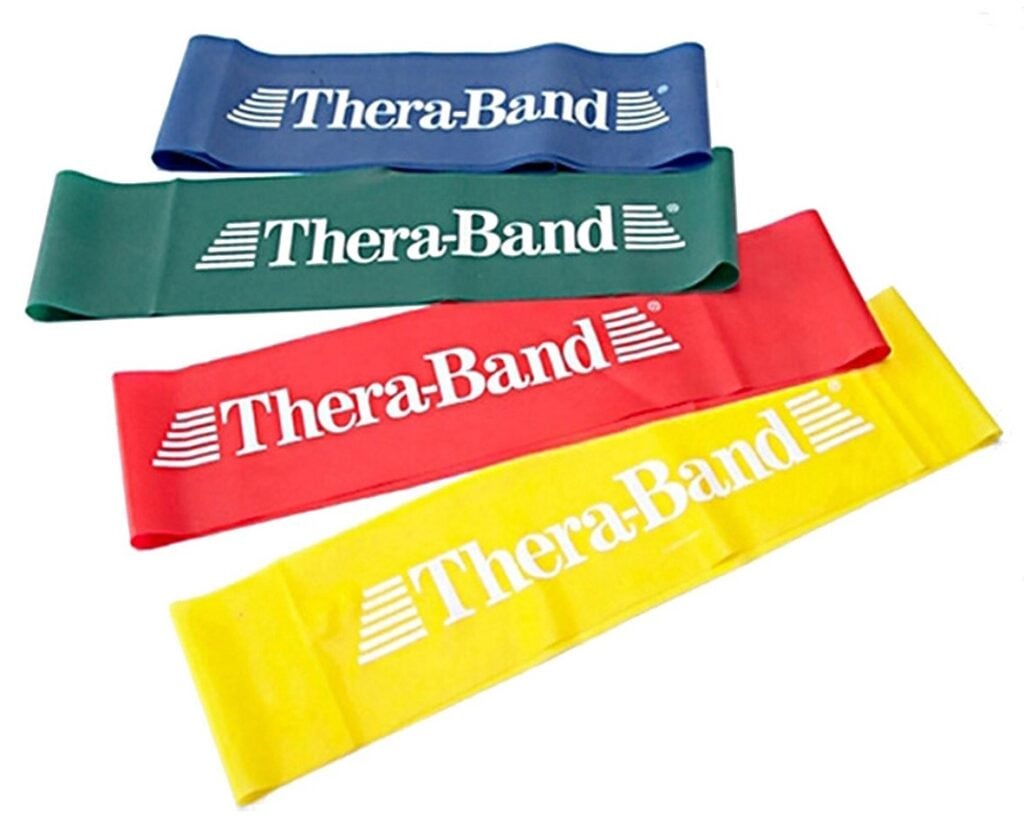Thera-Band Ankle Exercises
Posted by: Julie Graves | Head Athletic Trainer
Thera-Band Ankle Exercises
Ankle sprains are far too common in many sports, especially soccer. The most common type of ankle sprain is a lateral ankle sprain, which means on the outside of the ankle. There are some who confuse the term ‘sprain’ and ‘strain’. A sprain is an injury to a ligament, which connects bone to bone. A strain is injury to a muscle. Both types of injuries can be prevented with proper strengthening.
A TheraBand is a thin, flat rubber band that can be used for many different exercises, specifically ankle strengthening to prevent ankle sprains.

There are four primary ranges of motion that the ankle joint can do: Inversion (moving your toes in), eversion (moving your toes outwards), dorsiflexion (toes to your nose), and plantarflexion (pointing your toes, like using a gas pedal). The most common Mechanism of Injury (MOI) for a lateral ankle sprain is typically plantarflexion and inversion, also known as lateral ankle sprain, which injures the ligaments on the outside of your ankle. When the muscles surrounding our ankle are strong, in some cases, a lateral ankle sprain can be avoided. Using a Thera-band causes resistance to build up the muscles in your ankle. Attaching a Thera-band around the base of a chair or table and making a loop for your foot to go in is the best way to utilize these bands for strengthening. Doing 2 to 3 sets of 12 repetitions doing each range of motion, two to three times a week will put you in a great position of preventing ankle sprains.
When You’ve Sustained an Ankle Injury, Here is a Guideline for Rehab Protocol:
Progression is as Follows
- Once swelling and pain are manageable, may begin increasing range of motion
- Once range of motion is equal bilaterally (compared to other ankle), may begin strengthening exercises
- Once strength is equal bilaterally and there is no compensation (limping, favoring the good side, etc) the athlete may begin progressing their way back to their sport
Goals
- Decrease swelling
- RICE ( Rest, Ice Compression, Elevation)
- Ice: 20 minutes at least 3 times/day
- Compression: Ace wrap starting at the toes going up to mid-calf all the time except during icing, shower, sleep
- Elevation: Keep ankle raised above the heart. Do “pumps” (flexing and extending the foot forwards and backwards) for 20 minutes while highly elevated, ideally at night but can be performed multiple times throughout the day.
- Do not ice directly before or after the “pumps”
- RICE ( Rest, Ice Compression, Elevation)
Decrease Pain
- Natural solutions (contact me for more info)
- NSAIDS for no longer than 7-10 days
Increase Range of Motion/Mobility
- ABC’s
- Actively moving the ankle in each direction: forward, backward, and side to side
- Wall Touches 2×20
- Swinging leg 80x
Increase Strength
- Band exercises 2×10 in each direction
- Slow and controlled
- Only move the ankle, not the hip for the side to side exercises
- Calf Raises (going on tippy toes) 2×10
- Slow and controlled
- Toe Raises
- Lean up against a wall and slowly and controlled lift up your toes so that you are on your heels. Repeat 2×10
Suggested Equipment & Braces
Very important! Preventative (NOT a brace): Wear as directed once ankle injury has subsided to prevent recurrent injury: Pro Taco Ankle
The below ankle braces should ideally only be worn during the strengthening/return to play part of the injury. Wearing them for too long can decrease mobility in the ankle causing other injuries up the kinetic chain to occur.
- Don Joy Ankle Pod (specifically made for soccer cleats)
- Strap Brace
- DICK’S Brace
Find out more about the CRYSC Sports Medicine Program by visiting our website. For any question or concerns related to ankle injuries/exercises, sports medicine, or athletic training, please reach out to the CRYSC Head Athletic Trainer, Julie Graves, at [email protected].









